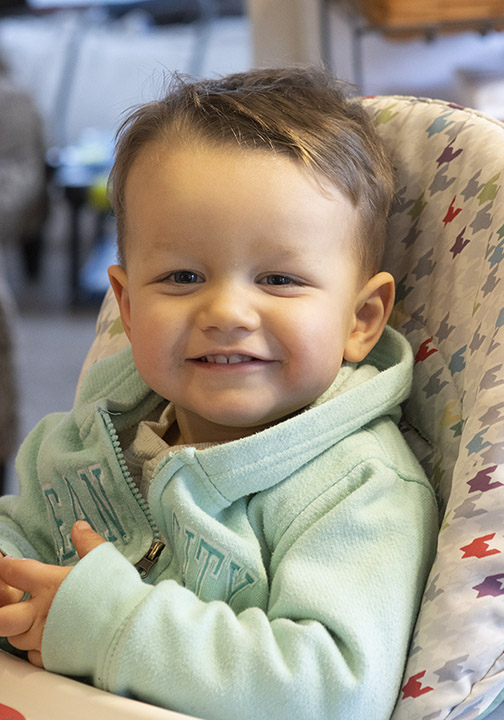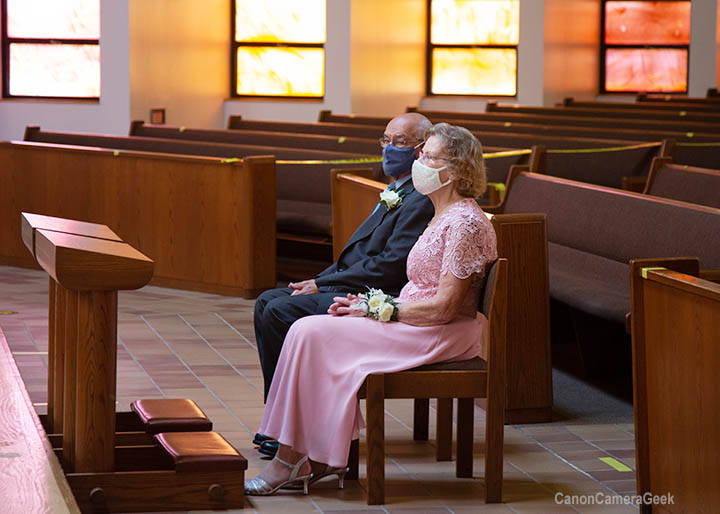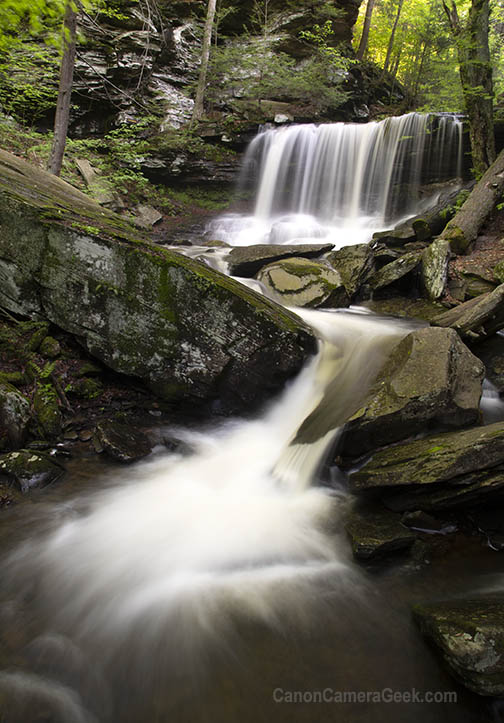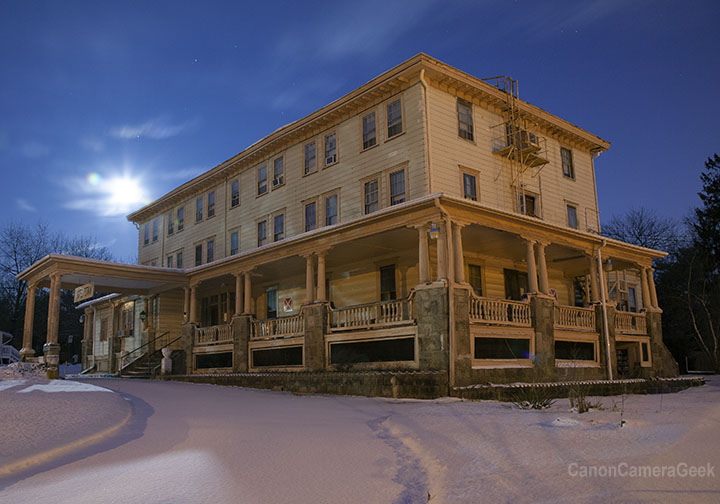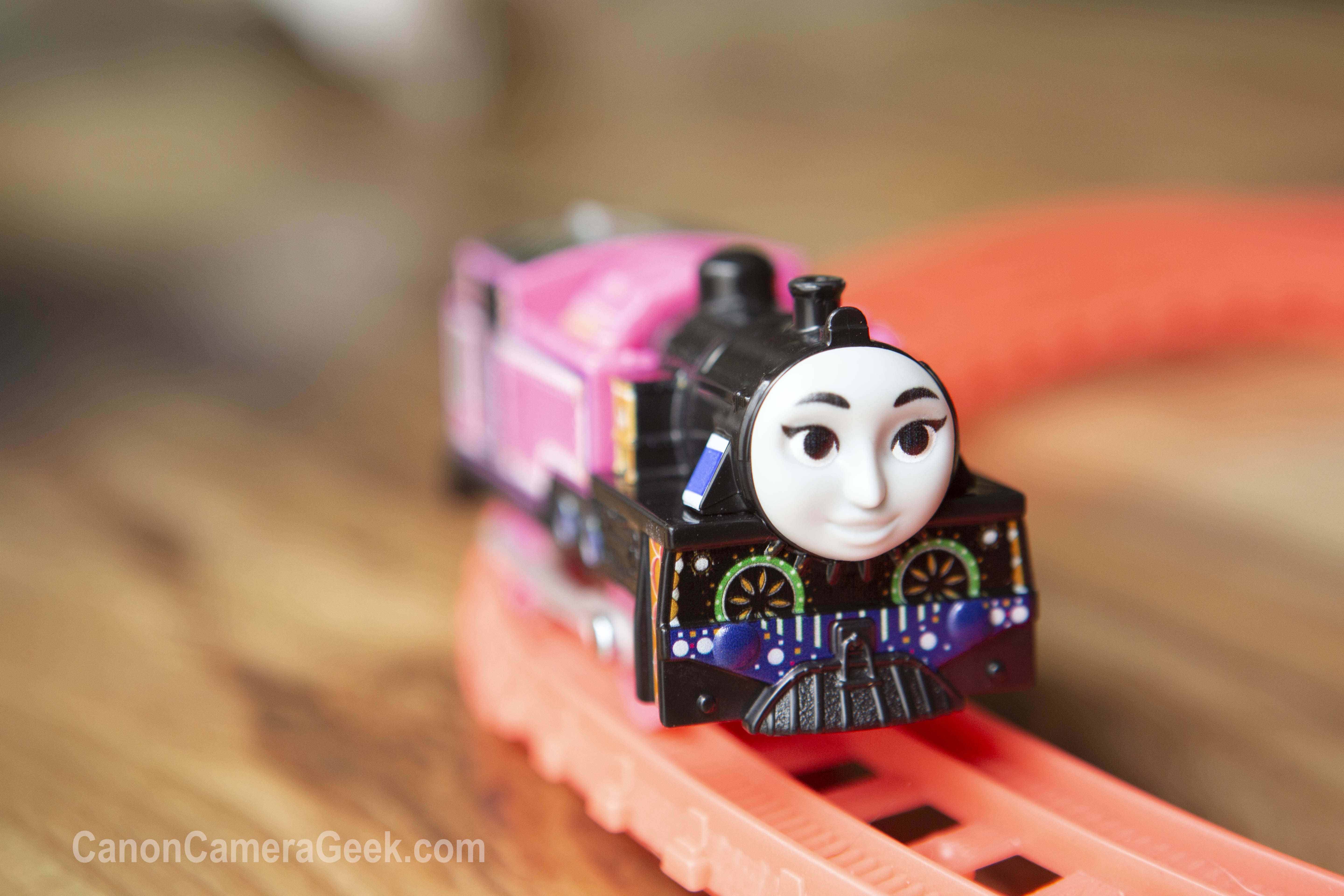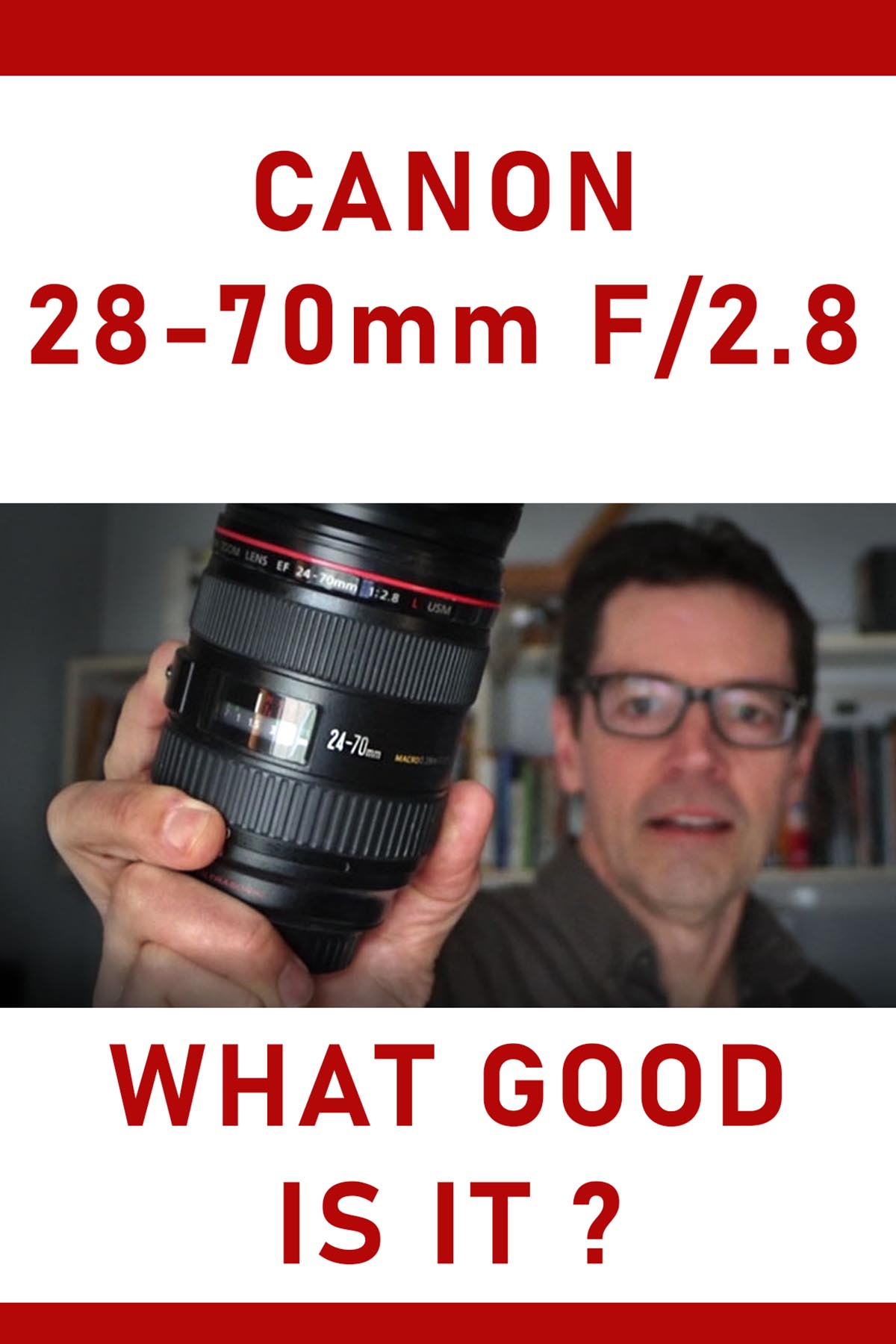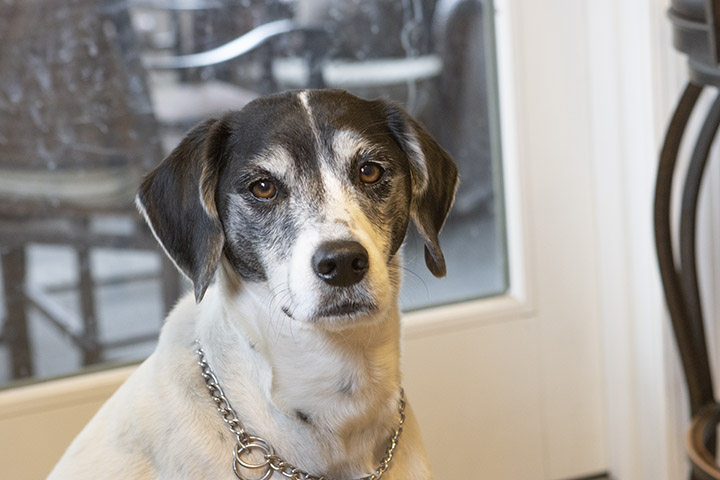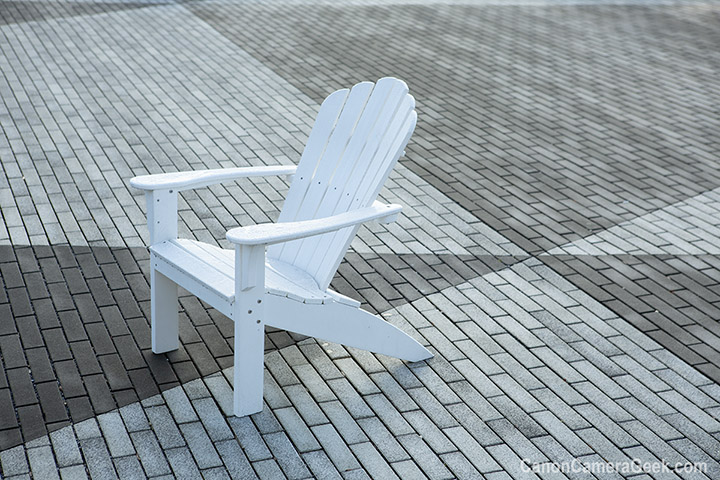Canon 24-70mm lens uses
Is this lens any good?
WRITTEN BY: BRUCE LOVELACE
UPDATED: JANUARY 16, 2024
You've heard photographers rave about this lens, but we need look at what the Canon 24-70mm lens is good for before we fall for all the hype. It's a good general purpose, walk around lens, but you want to know specifically if it's a good match for the type of photos you take.
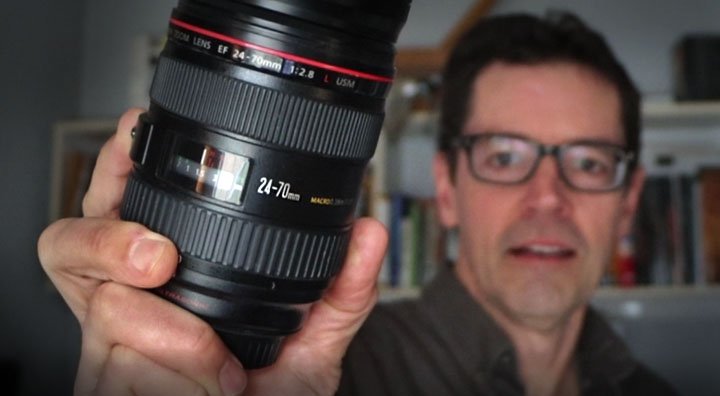 The author and his copy of the Canon EF 24-70mm f/2.8 Lens
The author and his copy of the Canon EF 24-70mm f/2.8 LensThe number one way the Canon 24-70 lens is used by professional photographers is to shoot events.
The 24-70 lens is a good choice for doing landscape photography, shooting portraits, macro photography, and making videos. It can be used to shoot travel photos, architecture, and weddings and also works for street and lifestyle photography.
Although this list of uses for the 24-70mm f/2.8 sounds impressive, you need to look a little closer at these uses before plunking down around $1,900 for the newest f/2.8 version of this lens. Let's look at two of the weakness of the 24-70 lens first. Then we'll dive into the types of photography the lens is good for.
IS THE CANON 24-70MM LENS ANY GOOD
| CANON 24-70mm F/2.8 ADVANTAGES | CANON 24-70mm F/2.8 DISADVANTAGES |
| 1. Great in dim lighting | 1. Limited telephoto magnification |
| 2. Desirable out of focus background ability because of wide maximum aperture | 2. Only a 2.5X zoom range |
| 3. Close focus distance is good for macro photography | 3. No image stabilization could give you blurry images when using a slow shutter speeds |
Is a 24mm to 70mm zoom range enough?
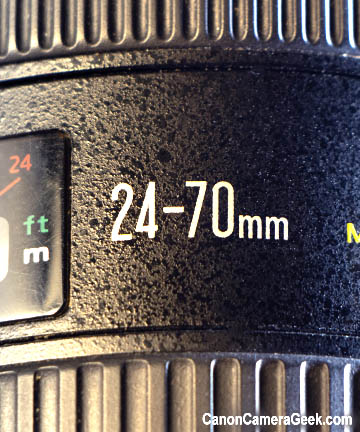 2.5X Zoom
2.5X ZoomThe zoom of this lens starts at a nice wide 24mm, but only zooms in to a very pedestrian 70mm.
That's a 2.5X range which pales in comparison to longer 4.3X zoom of the 24-105mm f/4.0 lens. Now, some might say this is not a fair comparison. The 24-70mm f/2.8 is a full f/stop faster than the 24-105mm f/4.
There's a reason for that. The more zoom range that's designed into a lens, then the harder it is to make it a fast lens.
The zoom range on the 24-70mm lens is even less that the zoom range you get with standard 17-55mm (over 3x) "kit" lenses that come with the smaller Canon crop cameras, like the 90D.
Canon 24-70 image stabilization
There are 3 versions of the 24-70 lens and only the f/4.0 version has image stabilization. The two f/2.8 versions of the 24-70mm lenses do not have image stabilization. For some photographers that is a deal breaker.
Not for me. I use a tripod when I have a slow shutter speed.
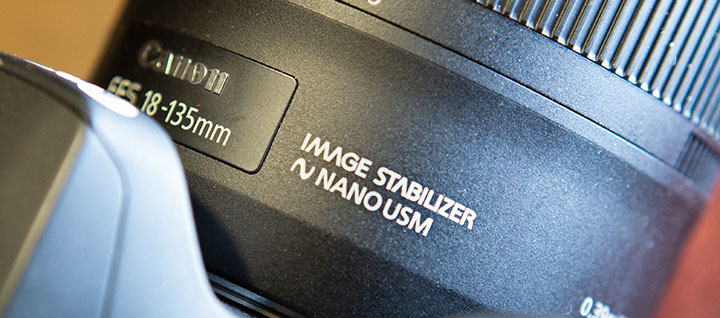 Just like my favorite EF-S lens, the 18-135, the f/4.0 24-70 has Image Stabilization.
Just like my favorite EF-S lens, the 18-135, the f/4.0 24-70 has Image Stabilization.The 24-70mm f/2.8 does not.
If you shoot a lot of your photos in dimly lit conditions your camera may need to a slow shutter speed to get a good exposure. That can give you motion blur and a lack of sharpness in your photos. If you don't use a tripod, you may want the help of image stabilization to get a sharp photo.
The lack of image stabilization in the 24-105mm f/2.8 makes it a week contender for shooting video. With image stabilization your video can have the jitters if your camera isn't kept very steady.
how to use the Canon 24-70mm lens
What can you photograph with this lens? It's referred to as a great general purpose, walk around lens, but let's take a look now at the specific ways of how you can use the Canon EF 24-70mm f/2.8 lens. It covers wide angle to short telephoto focal lengths.
portrait photography
The Canon 24-70mm lens allows you to shoot fairly large group portraits as well as closer framed individual poses without having to change lenses. For tight headshots, a lens with a little more reach than the 70mm maximum length would be ideal.
The photo of the young boy below was taken with the 24-70 focused at about 5 feet from the subject.
Shooting with the lens wide open at f/2.8 can give you some pleasantly out of focus backgrounds which is often a desirable outcome with portrait photography.
At 70mm you can compose small families from a comfortable working distance and still get a pleasing perspective.
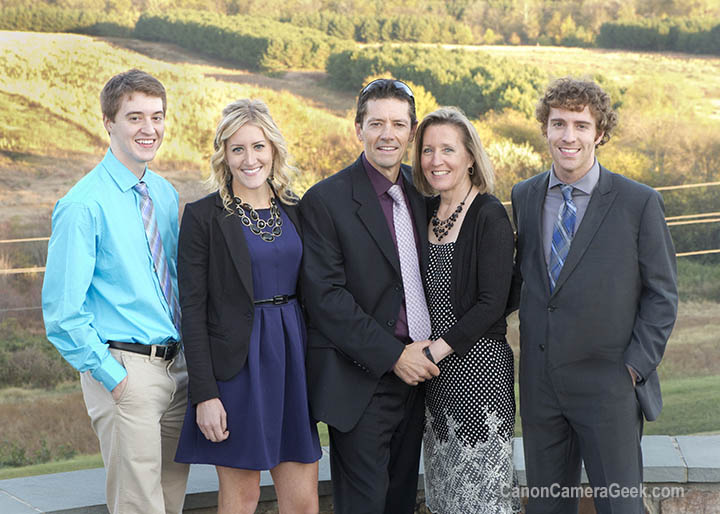 Short telephoto focal lengths give a pleasing perspective for small family portraits.
Short telephoto focal lengths give a pleasing perspective for small family portraits.wedding photography Lens
The 24-70mm f/2.8 lens is likely known more for its use as a wedding lens than any other use. Shooting without flash is a must have capability for certain situations in wedding photography. The f/2.8 aperture lets in twice as much light than an f/4 lens.
That gives you a fast enough shutter speed to prevent blurry photos. This is important since the f/2.8 version of the 24-70 lens does not have image stabilization.
You can compose various group portraits at a comfortable working distance from your subject.
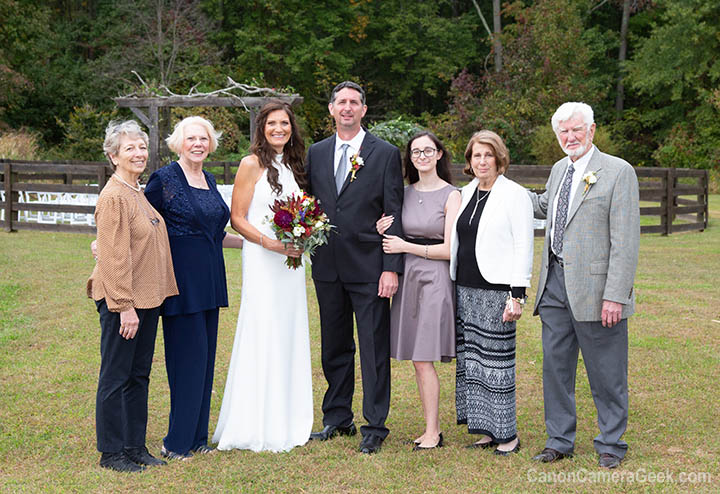 Wedding pose with focal length in between 24mm and 70mm @ 55mm
Wedding pose with focal length in between 24mm and 70mm @ 55mmlandscape photography with the 24-70mm lens
Some of my favorite landscape images have come from my lens set at a focal length of 24mm.
With your camera turned to a vertical position you can compose your photographs to include a lot of depth. You can include close-up and more distant objects in the same photograph.
architectural photography
The 24 to 70mm focal length range is adequate for photographing architectural subjects but not always ideal. A focal length of 24mm was just fine for the photo below of this old abandoned hotel.
The 24 mm setting on the Canon lens gives you a wide enough view to photograph buildings when fairly close to them.
Photographers needing to get an even stronger perspective will go with an even wider lens or a tilt-shift lens for professional level architectural photography. The 24-70 lens is a good range of focal lengths for most hobbyist and beginning photographers to shoot architecture.
Some architectural subjects like the building below require the use of a lens of 17mm focal length or wider.
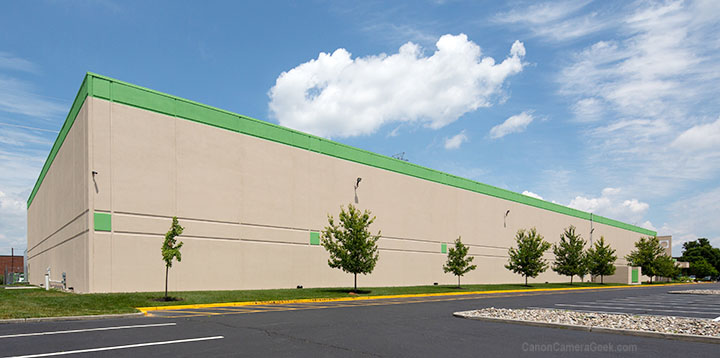 A super wide angle lens is need for architectural shots like this one
A super wide angle lens is need for architectural shots like this oneI need to get real close to this building because of the existing landscaping. There were trees in the way at the edge of the parking lot behind me. Using the wider lens also creates a more rapid fall off of distant objects.
macro photography
The Canon 24-70mm f/2.8 comes with good macro abilities. The photo of "Ashima" from Thomas the Tank Engine fame, was photographed at the closest distance possible with the lens set at 70mm.
You can get very close to your subject even without extension tubes. The 24-70mm lens has a minimum focusing distance of about 15 inches.
final thoughts on the Canon EF 24-70mm f/2.8 Macro lens
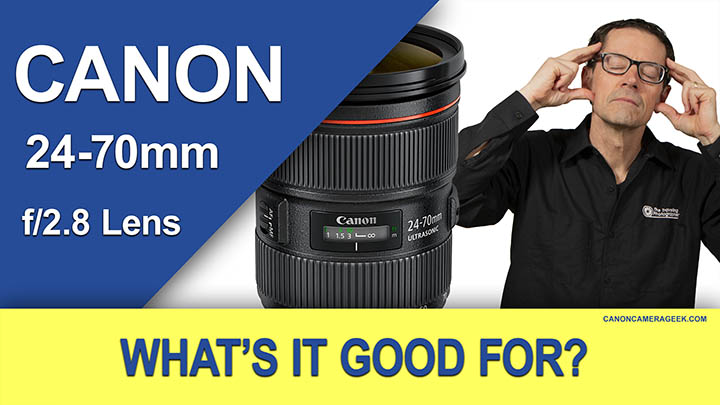
The 24-70mm lens is good for a large variety of types of photography subjects. It's the bread and butter lens for many portrait and wedding photographers.
It's not the ideal lens for everything, but no lens is. It's very sharp, shows minimal distortions and vignetting in lens tests. It's fast with a maximum aperture of f/2.8 throughout its zoom range.
Summary
I hope this article helped you evaluate whether the 24-70 lens is a good choice for you or not. It's a popular and versatile lens for various types of photography. For me, it's too short of a focal length range.
Use the search box below to find out about any other Canon gear you might be interested in. You can look at a list of Canon Lens articles or check out the links below my signature for related lens articles.
Have a blast. Shoot a Canon.
Search for articles on this Site:


Bruce Lovelace is the publisher of Canon Camera Geek. Read more about him on the About Page. He also publishes how to articles and camera gear reviews at the Photography Tips website.
View some of Bruce's photos on Instagram and Flickr. Join the tribe of followers on YouTube. Bruce also runs photo workshops and provides 1 on 1 digital photography coaching.
As an Amazon affiliate Canon Camera Geek receives a small commission from qualifying purchases, at NO added cost to you.
Recent Articles
-
Choose the Right Memory Card for Your Canon R6 Mark II: Speed And Size
Nov 05, 25 02:04 PM
R6 Mark II Memory Card -
Canon G1x Mark II vs G1X-Side By Side Comparison of Canon G1X Cameras
Oct 22, 25 08:35 AM
G1 X Mark II vs. G1 X: Is the New Version a HUGE Leap... Or a Massive Mistake? Canon responded to the criticisms of the original G1X. Canon G1X Mark II vs G1X -
Sony RX100 III vs G1x Mark II by Canon. Side by Side Comparison
Oct 22, 25 08:07 AM
It's another one of those epic camera battles, this time not the Canon vs Nikon but rather the RX100 III Vs G1X Mark II battle. -
Canon R6 Mark II FAQ. Answers To All of Your Canon R6 M2 Questions
Sep 01, 25 07:51 AM
There's a lot you can easily learn about Canon's mirrorless R6 Mark II camera. Get your questions answered in this R6 Mark II FAQ -
Canon G1X Sensor Size. What Are The Specs on The Canon G1X Sensor
Aug 26, 25 11:39 AM
Here is a comparison of the Canon G1X sensor size with the rest of the "G" series Canon cameras
24-70 sample photo
The sample photo below was taken during a "walk around" at Rowan University in downtown Glassboro, NJ.
 Architectural photo taken with the 24-70 lens
Architectural photo taken with the 24-70 lens